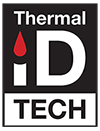May 23rd 2025
The Importance of Tamper-Evident Labeling in the Food Industry and Regulatory Expectations
In today’s fast-paced and highly regulated food supply chain, tamper-evident labeling has become a critical standard in ensuring product integrity, consumer safety, and brand trust. With increased demand for transparency and food safety from both consumers and regulators, tamper-evident features are no longer optional—they are a vital layer of protection for every food manufacturer, processor, and retailer.
Why Tamper-Evident Labeling Is Essential in the Food Industry
- Protects Consumer Health and Safety
Food products are inherently vulnerable to contamination, spoilage, and malicious tampering. Tamper-evident seals and labels provide clear visual evidence if a product has been opened or compromised before purchase. This reduces the risk of foodborne illness and ensures the consumer knows the item is safe to consume. - Enhances Consumer Confidence
In a marketplace crowded with choices, a secure, sealed package gives shoppers peace of mind. When customers see a tamper-evident seal, they associate the brand with responsibility, care, and professionalism—leading to greater loyalty and repeat purchases. - Meets FDA and USDA Guidelines
Although the FDA does not mandate tamper-evident packaging for all food items, it strongly recommends it, especially for products like dairy, baby food, ready-to-eat meals, and beverages. The Food Safety Modernization Act (FSMA) emphasizes preventive controls, and tamper-evident features are part of those best practices. - Prevents Product Theft and In-Store Tampering
Grocery stores, convenience stores, and food service environments are vulnerable to in-store tampering, especially with high-value or grab-and-go items. Tamper-evident packaging discourages theft or resealing and provides clear evidence when products have been opened. - Reduces Liability for Manufacturers and Retailers
In the event of a product safety complaint or recall, a company with proper tamper-evident measures can demonstrate it followed best practices. This may limit legal exposure and protect a brand’s reputation in the eyes of regulators and consumers.
Common Tamper-Evident Features in the Food Industry
- Shrink bands around lids or caps
- Breakaway caps or seals that cannot be reclosed once opened
- Pressure-sensitive labels that tear or leave “VOID” patterns when removed
- Induction-sealed liners for jars, bottles, and containers
- Tamper-evident tapes on boxes and multi-packs
- Pop-up buttons on vacuum-sealed jar lids
These features are often combined with lot numbers and expiration dates to increase traceability and safety assurance.
Industry Segments Where Tamper-Evident Labeling Is Most Critical
- Dairy and beverages (milk, juice, kombucha)
- Baby food and formula
- Nutraceuticals and supplements
- Pre-packaged meals and meal kits
- Snacks and confectionery
- Condiments and sauces
- Ready-to-eat or grab-and-go foods
Regulatory Guidelines and Industry Best Practices
While tamper-evident packaging is not universally required by law for every food product, the FDA's Code of Federal Regulations (CFR 211.132) outlines clear requirements for tamper-evident packaging on over-the-counter (OTC) human drug products and strongly encourages the food industry to adopt similar safeguards. Additionally, large retail chains like Walmart, Kroger, and Costco often enforce private compliance standards that mandate tamper-evident seals for food suppliers.
For USDA-regulated foods, such as meat and poultry, tamper-evident packaging is required when products are vacuum-sealed, cured, or processed and sold ready-to-eat. These measures are often integrated with labeling requirements to ensure full traceability.
Click here to shop Food and Drink tamper labels.
For custom tamper labels, contact us 1-888-958-5611.



